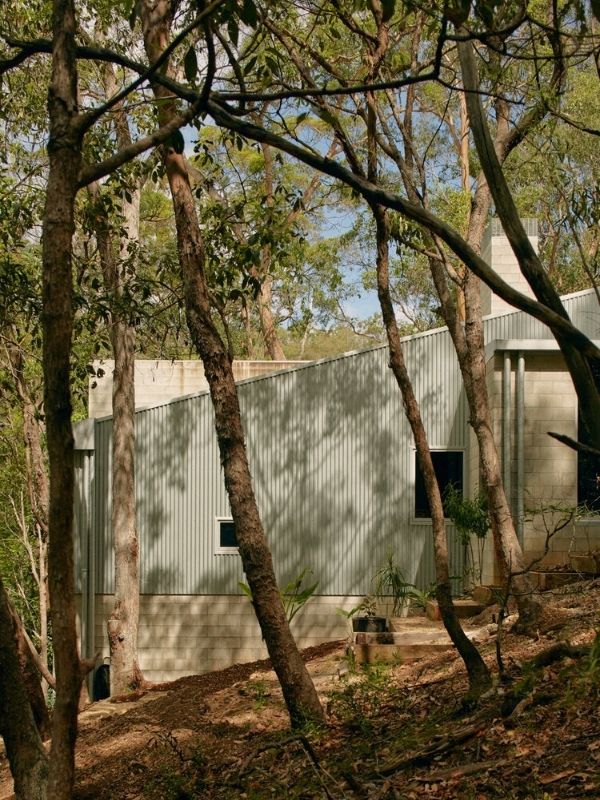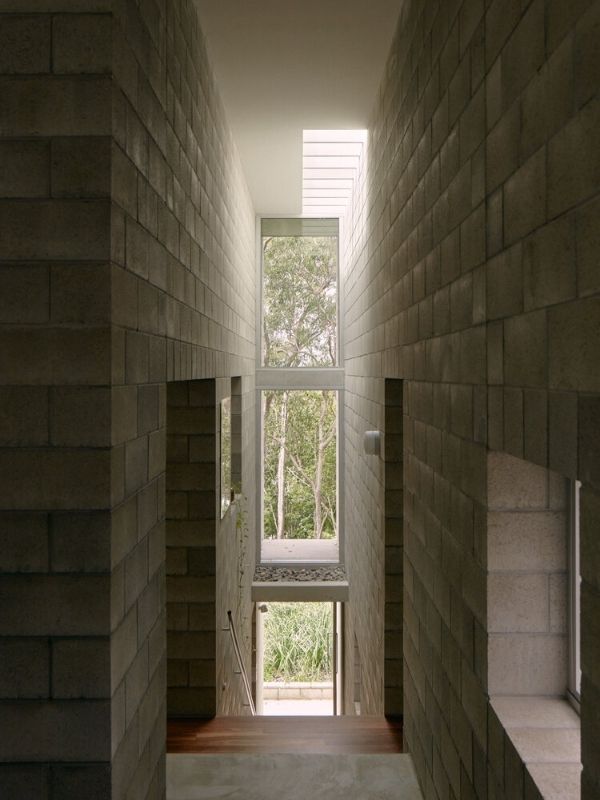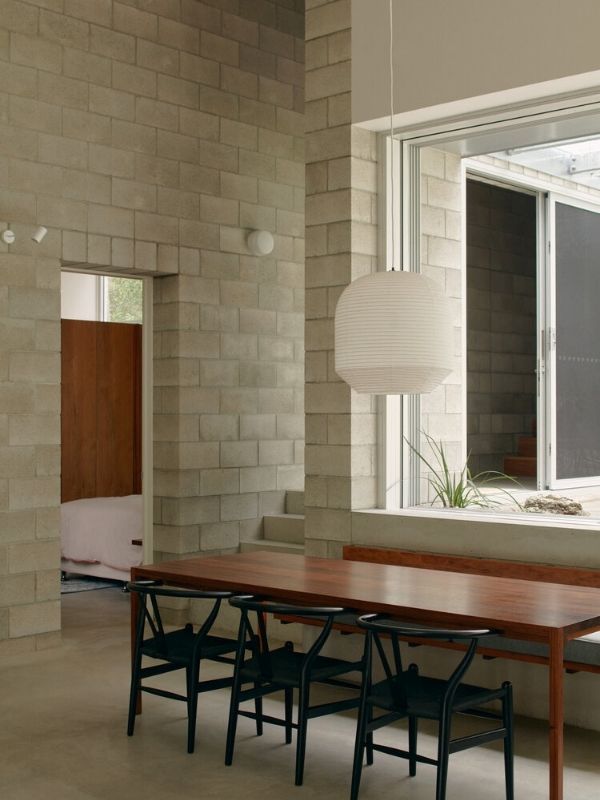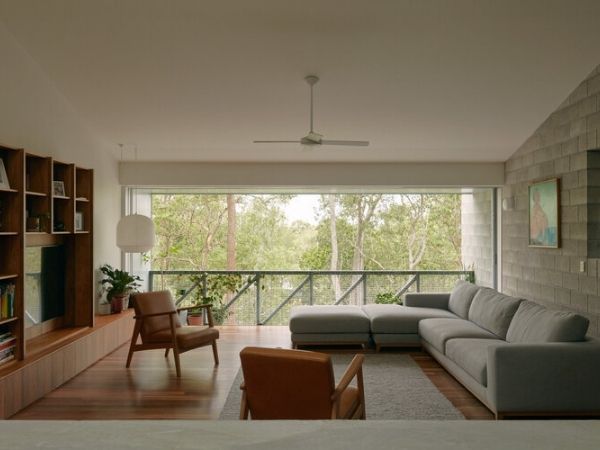Built to the regulations of the second-highest bushfire attack level (BAL40), Mt Coot-Tha House responds directly to the slope it finds itself upon. Designed by Nielsen Jenkins, the house aims to connect to the dry eucalypt forest beyond it’s back door.


The house was created for a family member of one of Nielsen Jenkins’ architects. A number of sloping volumes are brought together by a triple height staircase block that steps up the site. The ground level plays host to the garage, with the dining, kitchen and living spaces on the first floor with the main bedrooms situated on the second floor.



The first floor deviates from open-plan living areas that are typically seen within contemporary builds, with the living area and balcony stepping up to the kitchen, which offers views to an internal courtyard. The courtyard, likened to a village green by the practice, provides a contrast to the dry bushland of the forest outside, with a curation of plantations offering a splash of colour unseen amongst the natural plantations.


Working with a limited amount of material choices due to bushfire regulations, Nielsen Jenkins have opted for a blockwork exterior and corrugated metal roof that steps up the site in conjunction with the three volumes. A series of wet walls implemented around the perimeter have been pulled away from the house to deal with overland water flow, which imitate clearings within the forest and creating small courtyards.


Internally, the blockwork structure is exposed at certain points including walls and the staircase, but is contrasted by white walls and timber joinery and flooring. High panoramic glazing, skylights and framed openings provide the occupants with multiple windows to view the forest from a range of perspectives. The amount of openings also allow for natural light to make its way into the home, illuminating the material palette when the sun is at certain positions.


Nielsen Jenkins have been able to devise an award-winning home that takes bushfire regulations in its stride. Moving with the slope of the site and bringing colourful contrasts along the way in the form of plantations and materials, the home is far more sanctuary than sojourn.

